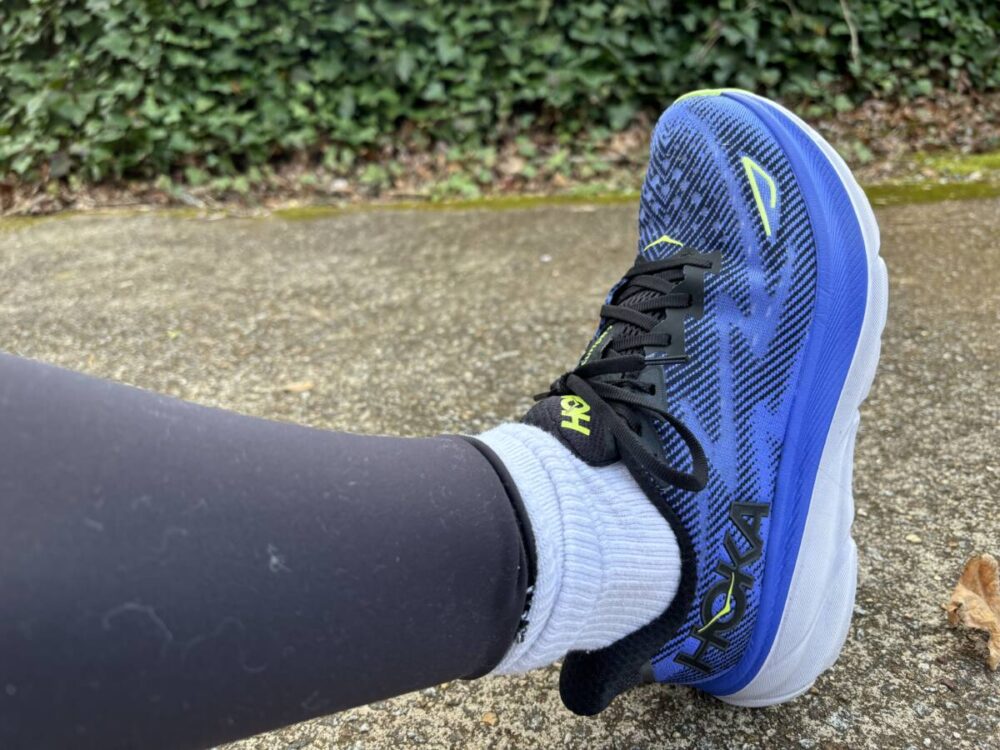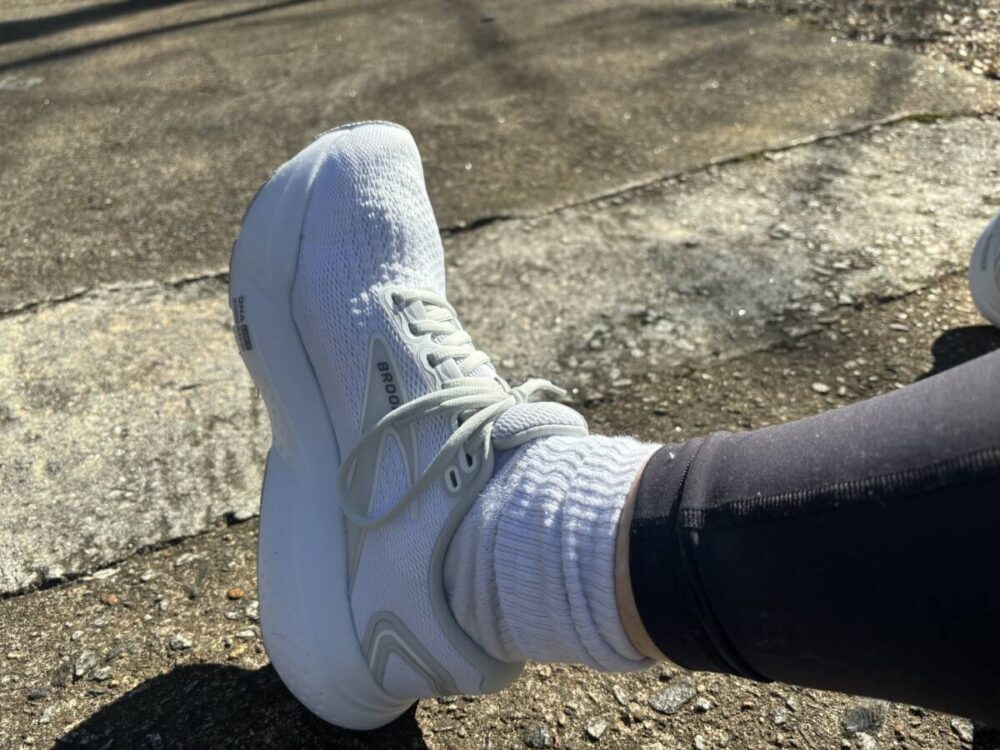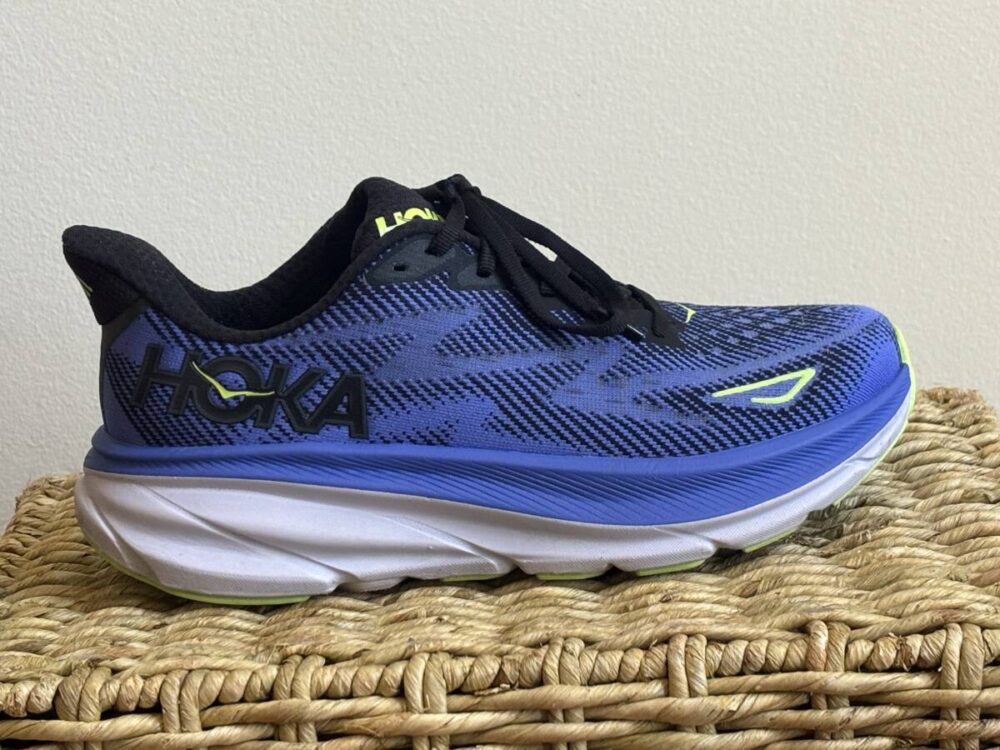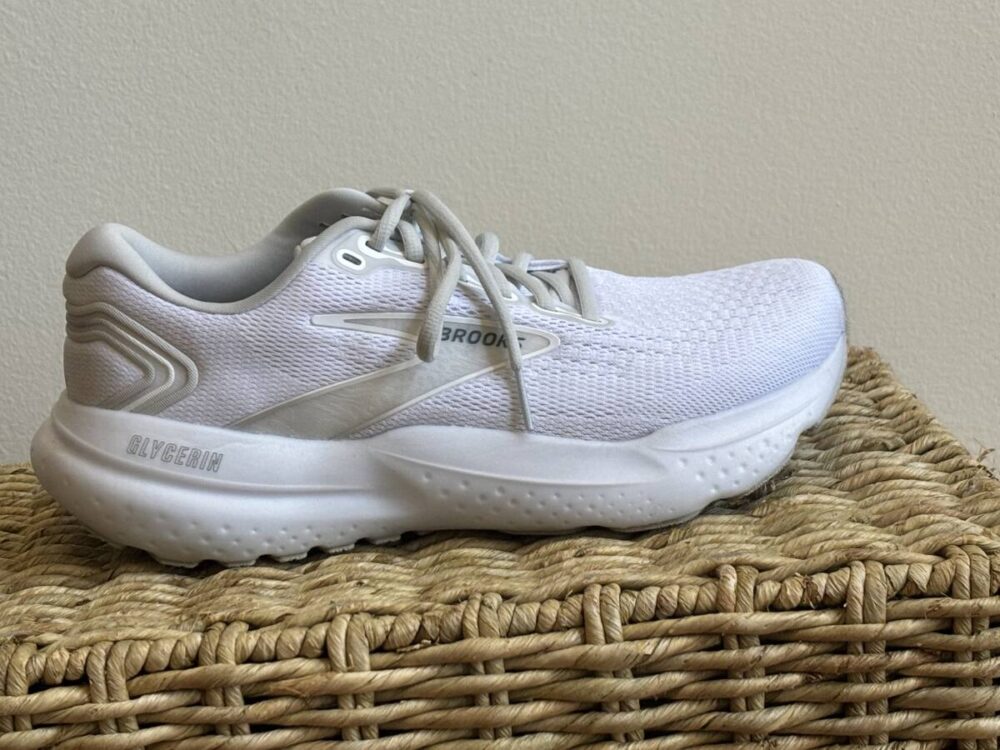The products and services mentioned below were selected independent of sales and advertising. However, Simplemost may receive a small commission from the purchase of any products or services through an affiliate link to the retailer's website.
Which running shoe brand is better: Hoka or Brooks? Ask this question of a regular runner like me, and you’ll probably get a lot of hedging. The fact is, there’s a reason that Hoka and Brooks are each incredibly popular in their own right. They both produce top-notch running shoes with the American Podiatric Medical Association Seal of Approval.
Over the last month, I test-drove (test-ran?) a popular model of each brand: Hoka Clifton 9 and Brooks Glycerin 21. If you’ve been trying to decide between the two, here’s our thoughts on both.
Hoka vs. Brooks Pros and Cons
The biggest similarity between the two shoes is that they are very much running shoes of the moment — and by “of the moment” I mean “maximalist.” Cushion-forward running shoes are the big “it” trend right now. For both shoes, there’s some extreme cushioning going on here, with the soles of both shoes made from a lightweight but dense foam called compression-molded EVA (ethylene-vinyl acetate).
Hoka in particular is known for its wildly large stack heights (the technical term for the thickness of the sole). In fact, I have a friend who calls her Hokas “my high heel running shoes.” But the Brooks pair I chose is the plushiest model that Brooks makes — so its soles are comparably thick.
What’s different is that the HOKA Clifton 9 is a fairly level shoe — which means that the height of the heel isn’t much different than the forefoot. (It’s just a 5 mm difference.) But the heel of the Brooks Glycerin 21 is 10 mm higher than the forefoot. This is called the “heel-to-toe drop.”
Read on to learn how this difference can affect a shoe’s performance, as well as my general impression of both shoes.
Hoka

$145 at Hoka $145 at Dick’s Sporting Goods
- Pros: My overall feeling about the Clifton 9 shoes was: “This is one light and bouncy ride!” The Hoka Clifton 9 shoes weigh just 7.3 ounces, and yet the cushioning and shock absorption are really effective. I also loved how the rounded heel (aka “meta-rocker” design) makes the shoe rock forward naturally from heel to toe.
- Cons: Some people aren’t crazy about maximalist running shoes like Hokas because they say they have a low ground-contact feel (i.e., the foam cushion prevents the runner from feeling the road beneath their feet). While I personally didn’t feel unstable in the Clifton 9 shoes, I can understand why someone might prefer to be a little closer to the ground. Another quibble: From an aesthetic point of view, these shoes look big. If you’re looking for shoes that make your feet look dainty, these aren’t them.
Brooks

$160 at Brooks $160 at Dick’s Sporting Goods
- Pros: The Brooks Glycerin 21 shoes have many of the same fantastic benefits I loved about the HOKA Clifton 9 shoes (which isn’t surprising — since this is the brand’s comparably plushy model). The cushioned soles made for a soft and stable run with lots of shock absorption and bounce-back responsiveness. One additional plus: A higher heel-to-toe drop (i.e., the heel is 10 mm higher than the forefoot) reduces stress on the Achilles tendon.
- Cons: While the Brooks Glycerin 21s have a slightly rounded heel, they don’t have the very pronounced rocker shape that propelled me forward in the HOKA Clifton 9 shoes. At 8.8 ounces, they are slightly heavier than the HOKAs (though not in a totally game-changing way). Again, like the HOKAs, these are some pretty beefy-looking shoes (not dainty). And you’re limited to nine color choices, as opposed to 21 color options for the HOKA Clifton 9s.
Fit and Sizing
HOKA

When judging whether the shoes fit properly, I took advice from Dr. David Alper, a podiatrist in Burlington, Massachusetts, and a trustee of the American Podiatric Medical Association.
“You should be able to put your hand around the belly of your foot in the chute, and it should be able to just wiggle a little bit,” he says. “And you should also be able to grab the end of the shoe without touching the end of your big toe when you are sitting — that will allow your foot to splay out when you put weight on it.”
Based on this recommendation, my usual shoe size fit me perfectly in the Hokas. (If you are buying online, HOKA offers a sizing chart.) HOKA is often praised as a good shoe for people with wide feet, though the Clifton 9 specifically is slightly narrower in comparison to former HOKA models. It does come in regular and wide sizes.
MORE: What to look for in running shoes
Brooks

I ordered my usual size in the Glycerin 21 shoes, and they were a bit snug in the length. If I were to buy them again, I would go a half size up, so they’re not exactly true to size. Brooks shoes are known for their wide toe boxes, which is why people with bunions are often drawn to this brand. I found the toe box to be roomy and very comfortable. (Brooks also offers a sizing chart online.)
For the Brooks Glyerin 21, you can choose between medium and wide. But some of the other Brooks running shoes come in four different width options: narrow, medium, wide, and extra wide. The site will let you know your options in the shoe’s description.
Performance
HOKA
The Clifton 9 shoes performed very well as I ran my usual route — on sidewalks and roads, up and down hills, sometimes on wet and slick pavement. The wide base kept me stable, and the cushioning foam soles gave me great bounce while absorbing the shock of my body weight.
If I was going to be doing more running on trails or uneven terrain, I would probably consider the HOKA Speedgoat 5 which are designed with a lot more traction for gripping the terrain. Like most runners, I tend to land first on my heel and roll foreword onto my forefoot. The plush heel on the HOKA Clifton 9 shoes provided the support I needed.
Brooks
The Glycerin 21 shoes were equally effective at offering me cushion, bounce and stability as I ran my usual running route — which was on (sometimes wet) pavement. If I were going to run on a rocky trail or on uneven terrain, I might opt for the Brooks Caldera 7 shoes, which were designed to really grip the ground.
I was especially impressed with the Brooks Glycerin 21s, though, when I was running uphill. As someone with an old ankle injury, I appreciated the extra heel and ankle support during those angled moments. (Remember, the heel on the Brooks shoes have more cushioning than in the forefoot.)
Final Thoughts
So which is the better running shoe, Hoka or Brooks? Sorry, but I simply can’t choose one as superior. Both shoes have fantastic shock absorption and bounce. And both manage this feat while also being lightweight.
For those who love curved shoes that rock you forward, the HOKA Clifton 9s might be a slightly better choice. And for those who love the extra cushion on the heel (with less cushion on the forefoot), the Brooks Glycerin 21 shoes might have a slight edge.
But honestly? You can’t go wrong with either of these top-notch running shoes. It comes down to personal preference. But if you want a little extra expert advice on choosing your shoes, check out what to look for in your next pair below.
Hoka vs. Brooks: Here’s what we think about each running shoe originally appeared on Simplemost.com


